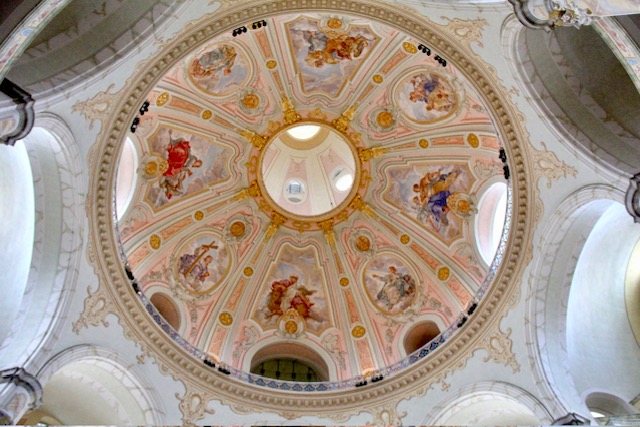On the Elbe River, Dresden is one of Europe’s greatest Baroque cities. It was the seat of the Saxon rulers, who built beautiful riverside palaces and soaring churches, and left the city with their vast collections of art and antiquities. However, the city suffered the double blow of almost complete destruction in World War II, followed by 45 years of postwar neglect under the Soviet regime. The Dresden you see today has risen from its ashes and bears few scars from its late 20th-century trauma. Palaces and churches have been restored to old glory and gardens bloom all over the city.
We took a train from Berlin to Dresden early in the morning. The train journey was just 1 hour 15 min. It was then a short walk from the train station to the old town where all the sites are located.
Dresden Frauenkirche – Dresden’s spectacular church is one of the most remarkable reconstruction projects ever to have taken place in Germany. The original church was completed in 1743. After its destruction during Allied bombing in 1945, the ruins of the old building were cataloged and stored for use in its reconstruction.
The rebuilding of the church started immediately after reunification in 1990, and when it reopened in 2005, nearly 4,000 original stones had been included. You can visit the church for free and is open from 9am-6pm. Ascent to the dome is a paid attraction from 10-6pm 8e.


The church interior is simply spectacular. You can take an elevator to the dome for views of the city, participate in worship services (once a month in English) and listen to one of the more than 100 concerts performed here each year.



Dresden Royal Palace and Museum – On the day we traveled to Dresden, the Palace and Museum was closed. If open, it should be at the top of your list of places to visit in Dresden along with Frauenkirche. The Dresden Royal Palace and Museum is one of Europe’s richest and probably its oldest public museum.

Zwinger – A magnificent early 18th-century palace in the center of the city beside River Elbe. It’s worth walking around the outside just to appreciate its architecture. On its south side is the majestic 32-bayed Long Gallery, and flanking it to the east and west are four symmetrically arranged pavilions, the Wallpavillon and the Nymphenbad (Bath of the Nymphs), with its graceful fountains and mythological figures.





Aside from its impressive architecture, the Zwinger houses more of the Dresden State Art Collections. These include the Dresden Porcelain Collection and scientific instruments in the Royal Cabinet of Mathematical and Physical Instruments.
Theaterplatz and the Semper Opera – The west side of Dresden’s Theaterplatz, one of Germany’s finest public squares, is dominated by the magnificent Semperoper, the city’s opera house, built in the style of the Italian High Renaissance. To see the lavishly decorated interior, we took tour led by one of the staff.




Brühl’s Terrace – No trip to Dresden is complete without a stroll along Brühl’s Terrace, or Brühlsche Terrasse, also known as the “Balcony of Europe.” Approached from the Schlossplatz by a broad flight of steps, this area on the site of the old city ramparts was laid out in 1738 as a private garden, and opened to the public in 1814.




You can see the beautiful Dresden Cathedral (Hofkirche) from Brühl’s Terrace. It is a cathedral belonging to the Roman Catholic Diocese of Dresden-Meißen as well as a parish church. It was damaged due to 1945 bombing. The restoration process of the catholic church stretched until 1965, however, the marks of the bombings are still visible to this day.
The Procession of Princes – The Georgentor, or Georgenbau, was the original city exit to the Elbe Bridge and the first of the city’s many Renaissance buildings. On the west side is a doorway from the original building with its rich sculptural decoration, including an equestrian statue of Duke George. Also of interest is the Langer Gang, a long wing linking the Georgenbau with the Johanneum that was built in 1591. Along its inner side is a long Tuscan-style arcade, with 22 rounded arches, leading to the Court Stables. Its most important attraction, however, is the famous Fürstenzug – the Procession of Princes – a 102-meter-long portrait of the Dukes, Electors, and Kings of the house of Wettin, together with leading German figures from the arts and sciences. Commissioned in 1870, it consists of 25,000 Meissen Porcelain tiles.



Cruise the Elbe on a Paddlewheeler – The Elbe flows through the center of Dresden, and along its shore, under Brühl’s Terrace, are moored a fleet of paddlewheel steamships and other excursion boats. Cruises range from 90-minute tours of the city and its surroundings to longer trips. We took the 90 minute cruise of the city and surroundings.


